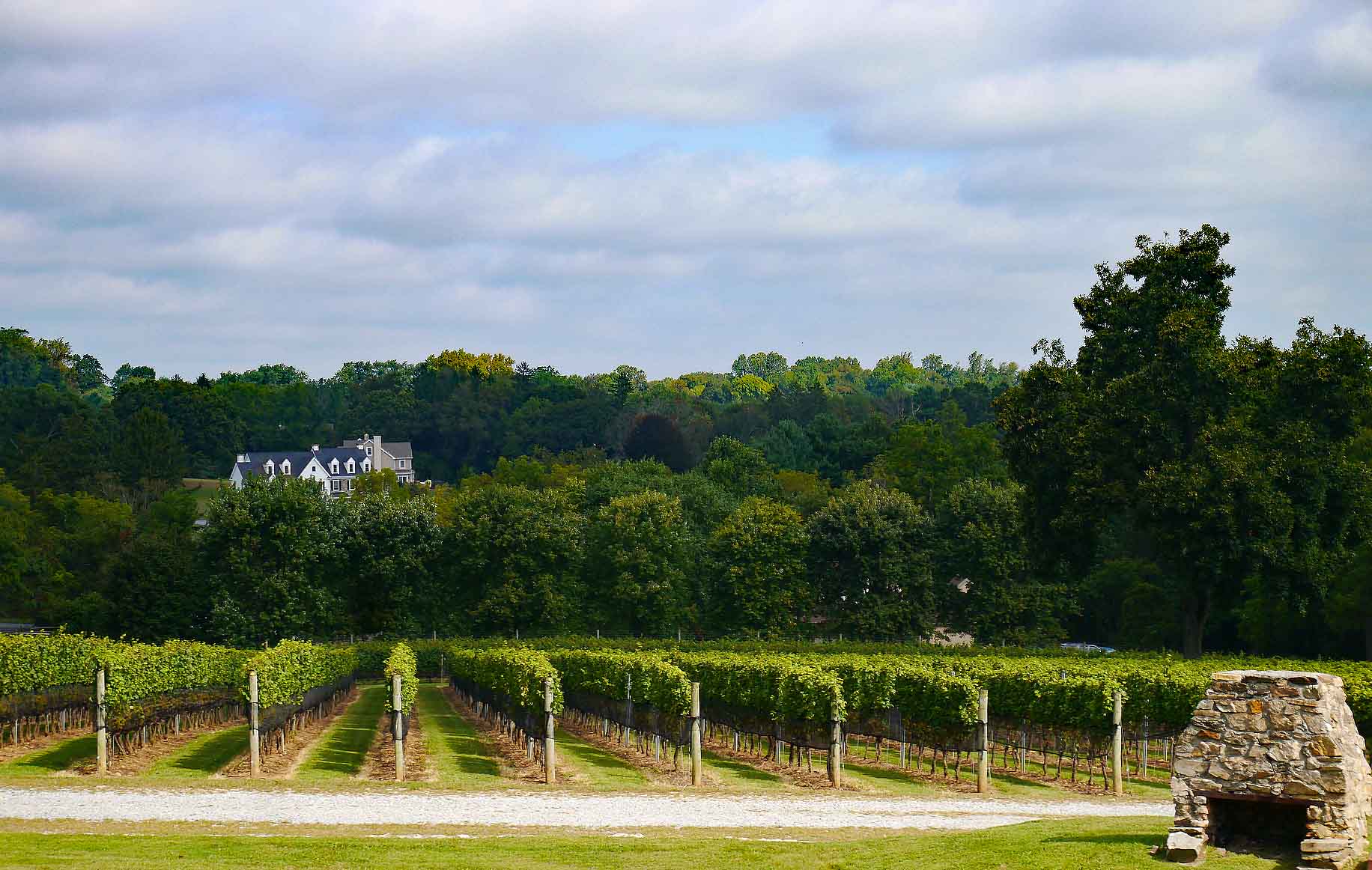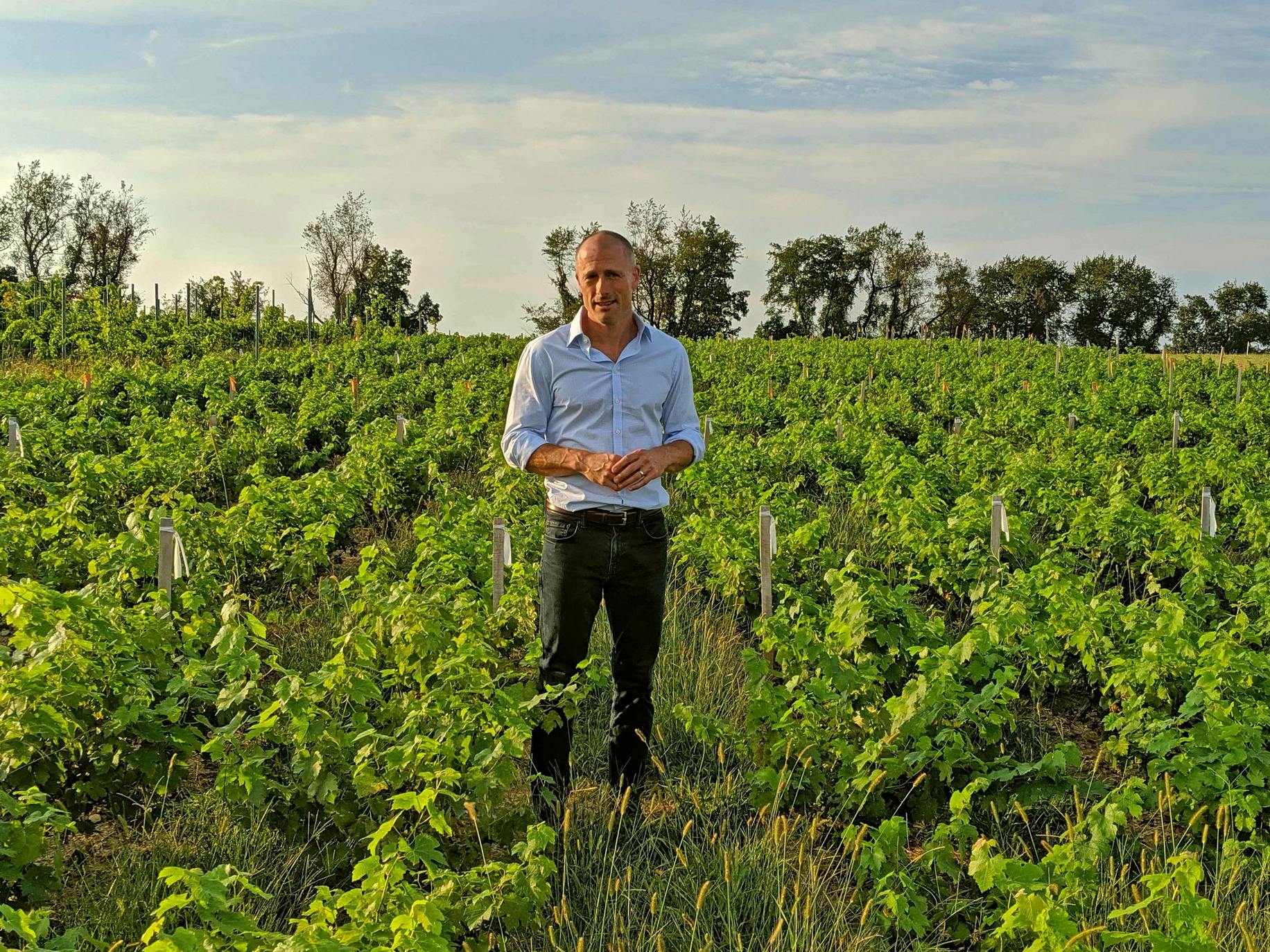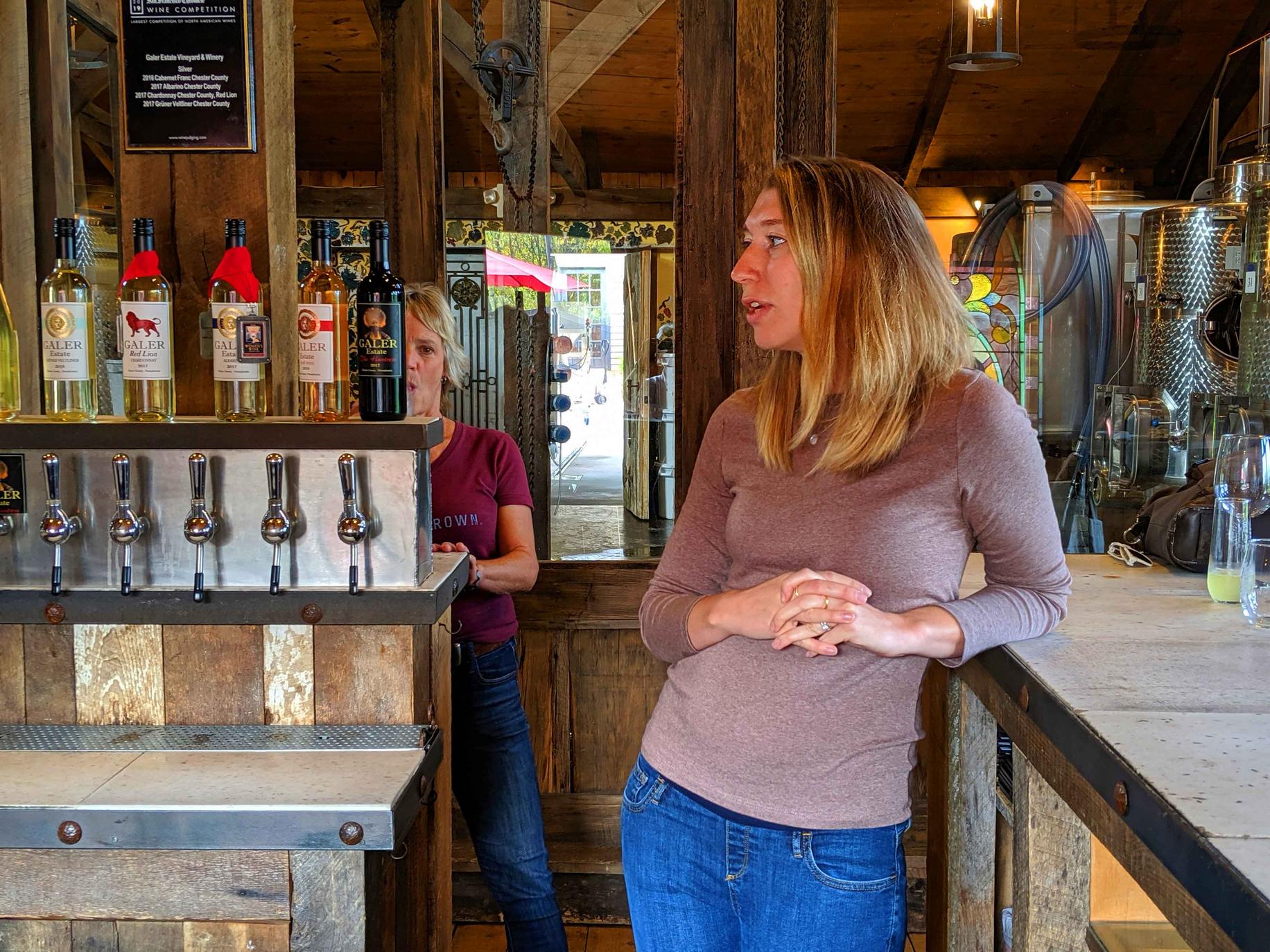Serious modern winemaking took root several decades ago in Pennsylvania, but a handful of small wineries just outside Philadelphia’s western suburbs are expanding well beyond the presumed limits for Keystone State wine. This third post takes a quick look at three wineries a short drive from Philadelphia. One challenges conventional thinking about Italian grapes for Eastern Seaboard winemaking. Nestled in a suburban neighborhood, another proves that “backyard winery” is not just a California phenomenon. And yet another is systematically proving that Pennsylvania can produce wines that age beautifully into a voluptuous maturity.
Vineyards speak for themselves at Vox Vineti
Ed Lazzerini refers to Vox Vineti (Latin for “voice of the vineyard”) as a nano-winery because it produces 200-300 cases per year. But the vines are young. As a New Orleans teenager on a family trip to Burgundy, Lazzerini became convinced that he wanted to be a vigneron, or grape grower. The dream never faded. As a mathematician and computer scientist, he was living in Manhattan but still itching to plant a vineyard.
“I could have gone to Napa or one of the other well-established regions, but I wanted to start a winery in frontier country.” In 2006, he and his wife Adrienne bought a rocky hillside in Andrews Bridge, Pennsylvania, that seemed to meet all his requirements for soil and exposure. In 2010, he planted the first 3.5 acres. Since then, he’s added another 1.5 acres. As the vines mature, Vox Vineti alters the proportions in the two signature blends. (Dr. Catherine Peyrot des Gachon, who also advises Setter Ridge, works closely with Lazzerini on the vinification.) Vox Vineti’s tasting room (49 Sproul Road, Christiana PA; no phone; voxvineti.com) is open on weekends and by appointment.
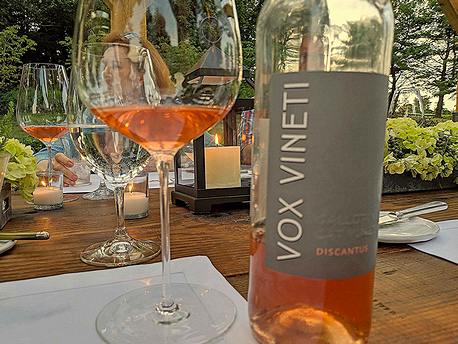 The rosé, called Discantus, evolved in 2018 from a blend of Barbera and Nebbiolo grapes to a more complex blend of Barbera, Cabernet Franc, Cabernet Sauvignon, and Nebbiolo. In medieval music, a discantus is a musical piece where one singer sings a fixed melody and the rest of the choir improvises around that solo. The fixed piece is Barbera, the other grapes the improvisers. Two-thirds of the grapes in the blend are picked early to preserve a potent acidity. The remaining third of the juice is a bleed from fully ripe Cabernet Franc. The result is a very food-friendly wine of surprising body despite its salmon hue. Perfectly balanced, it’s also an excellent sipping rosé.
The rosé, called Discantus, evolved in 2018 from a blend of Barbera and Nebbiolo grapes to a more complex blend of Barbera, Cabernet Franc, Cabernet Sauvignon, and Nebbiolo. In medieval music, a discantus is a musical piece where one singer sings a fixed melody and the rest of the choir improvises around that solo. The fixed piece is Barbera, the other grapes the improvisers. Two-thirds of the grapes in the blend are picked early to preserve a potent acidity. The remaining third of the juice is a bleed from fully ripe Cabernet Franc. The result is a very food-friendly wine of surprising body despite its salmon hue. Perfectly balanced, it’s also an excellent sipping rosé.
The flagship red blend, Polyphony, leads with Cabernet Franc, balanced by Cabernet Sauvignon and a touch of Petit Verdot. The grapes come largely from the hilltop. When Lazzerini tried to drive stakes at the end of the rows, he often hit large stones and eventually smashed his fiberglass sledgehammer. Hence, he calls the sector the “Shatterhammer Block.” A powerful red led by the forward baritone notes of Cabernet Franc, it is a meritage that speaks to its lead grape’s affinity for the acidic, stony soils of the Eastern Seaboard.
I was particularly impressed by Vox Vineti’s 2017 Nebbiolo, which reminded me of a friendly Gattinara or a Langhe Nebbiolo. In its full expression in Piemonte and Lombardy, Nebbiolo makes big, highly tannic wines like Barolo and Barbaresco. But younger vines tend to make more approachable wines with softer tannins, scents of violets, and a cherry-plum fruitiness. The vines at Vox Vineti are young, and the 2017 Nebbiolo has all those same characteristics—ideal for pasta, light game ragu, or sharp cheese.
Galer Estate vints in backyard idyll behind Longwood Gardens
The suburban neighborhood setting of Galer Estate Vineyard and Winery (700 Folly Hill Road, Kennett Square, PA; 484-899-8013; galerestate.com) comes as something of a surprise. Backyard wineries are not known for producing such high quality bottles. But Brad and Lele Galer started by purchasing an east-facing hill in Pocopson Township in 2005, clearing the land, and planting their home vineyard in three phases 2008-2010. In 2008, they also bought Folly Hill Vineyard on the site of the current winery. They soon discovered that they had to rip out half the vines to replant in Chardonnay. It’s now called the Red Lion vineyard.
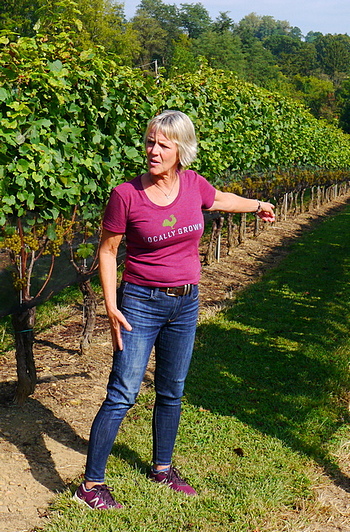 They also built the current gravity-fed winery—all this while limiting visitation to protect the privacy of their neighbors on the back of the old duPont estate, Longwood Gardens. The winery and its adjoining B&B cottage could be models for a design magazine. Unsurprisingly, the winery property is a popular wedding spot. Lele Galer creates most of the art in and around the tasting room. In fact, Galer Estate has a strong woman’s touch throughout. Jan Grimes (at right) manages the vineyards, and Virginia Mitchell (above) is both winemaker and winery manager.
They also built the current gravity-fed winery—all this while limiting visitation to protect the privacy of their neighbors on the back of the old duPont estate, Longwood Gardens. The winery and its adjoining B&B cottage could be models for a design magazine. Unsurprisingly, the winery property is a popular wedding spot. Lele Galer creates most of the art in and around the tasting room. In fact, Galer Estate has a strong woman’s touch throughout. Jan Grimes (at right) manages the vineyards, and Virginia Mitchell (above) is both winemaker and winery manager.
The wines are winners. I tasted several, but I’d like to single out three. The 2017 Red Lion Chardonnay hits the sweet spot for fine white wine from a boutique winery. Made entirely in stainless steel, it is a bright chard with pronounced acidity, a zesty fruitiness ranging from tangy lemon to mellow peach, and a full mouthfeel. Even more impressive, it sells for $18. Galer’s flagship red is Cabernet Franc. The 2017 iteration has spicy fruit with a few notes of blueberry and an astringency that suggests that it will become more suave after a few years in the bottle. The 2018 Rosé is a triumph of fine winemaking over difficult growing conditions. Galer made no reds in 2018, but took its best fruit—Cabernet Franc and Petit Verdot—for this bright and very structured rosé. When I closed my eyes to the luscious pink color, I could almost have been drinking a light claret. The tart cherry and raspberry notes are quite impressive.
Penns Woods Winery explores the possible in Pennsylvania
A well-established importer of Italian wines, Gino Razzi turned his attention to making wine from Pennsylvania grapes in 2002. A friend convinced him to give the local fruit a chance, “so I did a whole bunch of minivinifications,” he explains. Two years later, he purchased a winery with 25-year-old vines. He often speaks of the potential of Pennsylvania winemaking. One dollar per bottle of proceeds from his Penns Woods label is donated to promote wine and grape research in the state.
Razzi’s methodical approach to finding what works best in the region can be best appreciated at the Penns Woods Winery tasting room (124 Beaver Valley Road, Chadds Ford, PA; 610-459-0808; pennswoodsevents.com). His winemaking style is restrained. He likes the fruit to retain considerable acidity at picking, resulting in fresh, bright wines. Most wines see some time in oak, but rarely in new oak.
 To demonstrate the longevity of his wines, Razzi poured a prolonged vertical of Reserve Chardonnay. The oldest (2005) was just beginning to show a little oxidation. The 2007 drank like an elite white Burgundy, with superb minerality and surprising body. By the time we reached the 2011, the Chardonnay was showing an almost sweet fleshiness. The 2016 was bright and vibrant, with just a hint of oak. Although less married than the 2007, the 2017 promised to be another great keeper—an American parallel to the Côte de Beaune.
To demonstrate the longevity of his wines, Razzi poured a prolonged vertical of Reserve Chardonnay. The oldest (2005) was just beginning to show a little oxidation. The 2007 drank like an elite white Burgundy, with superb minerality and surprising body. By the time we reached the 2011, the Chardonnay was showing an almost sweet fleshiness. The 2016 was bright and vibrant, with just a hint of oak. Although less married than the 2007, the 2017 promised to be another great keeper—an American parallel to the Côte de Beaune.
As one of the most southerly of Pennsylvania wineries, Penns Woods also has considerable success with red wines. I was bowled over by the rich fruit, velvety texture, and aggressive tannins of the 2015 Merlot Reserve. I also had a taste of the 2005, which has matured into an elegant dandy as its tannins soften. The 2014 Cabernet Franc Reserve has a depth and range of flavor that reflects the age of the vines (up to 35 years) and the meticulous vineyard work to keep the fruit in full sun. But Penns Woods does not just rely on old vines. The Pinot Noir Reserve 2016 comes from fairly young vines but already displays a nose of dried roses and sunny loam with a palate tinged with cherry and cranberry.

